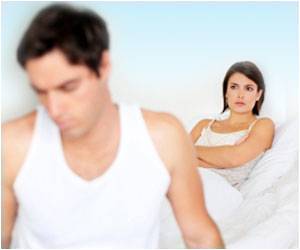Does cycling cause erectile dysfunction? The answer seems to be prolonged cycling on a poorly fitting bicycle seat may increase erectile dysfunction (ED) risk.

- Erectile dysfunction (ED) also known as impotence is the inability to get or sustain an erection for a satisfactory sexual activity.
- Restricted penile blood flow is a primary cause of ED
- Perineal compression during bicycling may be responsible for some cases of erectile dysfunction
Research
Investigations into the phenomenon are not a new development by any means, with studies being carried out into the subject as early as 1987. But the topic has arguably garnered more attention recently due to a growing awareness of sexual dysfunction in men and an increased readiness of sufferers to discuss the subject openly.Another investigation carried out by German researchers in 2001 examined the effects of cycling on erectile function in forty men aged 25-35; the results of which were even more pronounced. Over two thirds of the men studied were found to have ‘decreased penile blood supply’, with 61 per cent experiencing numbness in the genitals. Furthermore, nearly one fifth of men who cycled 400km or more per week reported episodes or erectile dysfunction.
Counter Arguments
An assessment carried out by London-based researchers in 2012-2013 refuted the above findings, however, stating that it found no significant association between cycling and ED; but did find one between cycling and prostate cancer.It argued that studies such as the Trondheim investigation concentrated on men participating in large-scale events, and did therefore not leave enough time for ED symptoms to ‘plateau and subside’.
However, by its own admission this study was subject to practical limitations. It used internet-based correspondence, and therefore an opportunity for further investigation of symptoms and physical examination was not possible.
The study, nevertheless, maintained that cycling is significantly more beneficial to erectile function than inactivity.
Preventative Methods
Research has shown that the type of seat used plays a large role in the potential incidence of symptoms. Scientists at the University of Cologne tested four different types of bicycle saddle, and their reductive effects on participants’ penile oxygen pressure (thought to be a pertinent risk factor in the cause of cycling-induced erectile dysfunction).It found that a seat with no nose and a wide base had preferable results to a heavily padded narrow seat, causing respective drops in penile oxygen pressure of 20.3 per cent versus 82.4 per cent.
Another study by the same scientists a year earlier also found that cycling in a reclining position was also more beneficial to penile oxygen pressure levels when measured against cycling in an upright position.
Whether the link between cycling and sexual dysfunction has been exaggerated or not, these are surely factors for those men looking to improve erectile function, through non-medicinal means via the adjustment of certain lifestyle measures, to take into consideration.
References:
- Impotence and Bicycling: A Seldom Reported Connection
http://www.ncbi.nlm.nih.gov/pubmed/3809048 - Impotence and Nerve Entrapment in Long Distance Amateur Cyclists br>http://www.ncbi.nlm.nih.gov/pubmed/9150814
- Impotence and Genital Numbness in Cyclists
http://www.ncbi.nlm.nih.gov/pubmed/11531032 - Cycling and Penile Oxygen Pressure: The Type of Saddle Matters
http://www.ncbi.nlm.nih.gov/pubmed/12074400 - Erectile Dysfunction in Cyclists. Is There Any Difference in Penile Blood Flow During Cycling in an Upright Versus a Reclining Position?
http://www.ncbi.nlm.nih.gov/pubmed/11464064 - An Observational Study of Erectile Dysfunction, Infertility and Prostate Cancer in Regular Cyclists: Cycling for Health UK Study; Hollingworth Milo, Harper Alice, and Hamer Mark. Journal of Men's Health. July 2014, 11(2): 75-79. doi:10.1089/jomh.2014.0012













